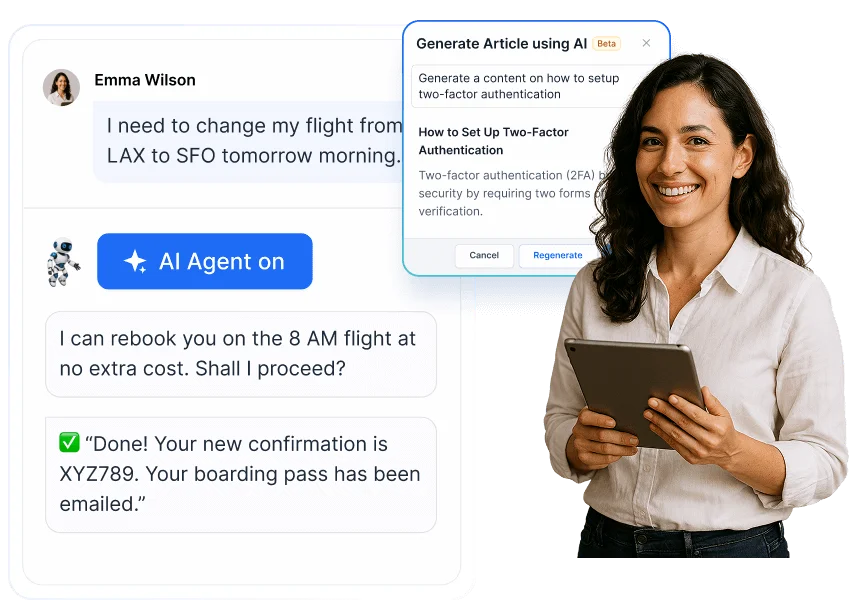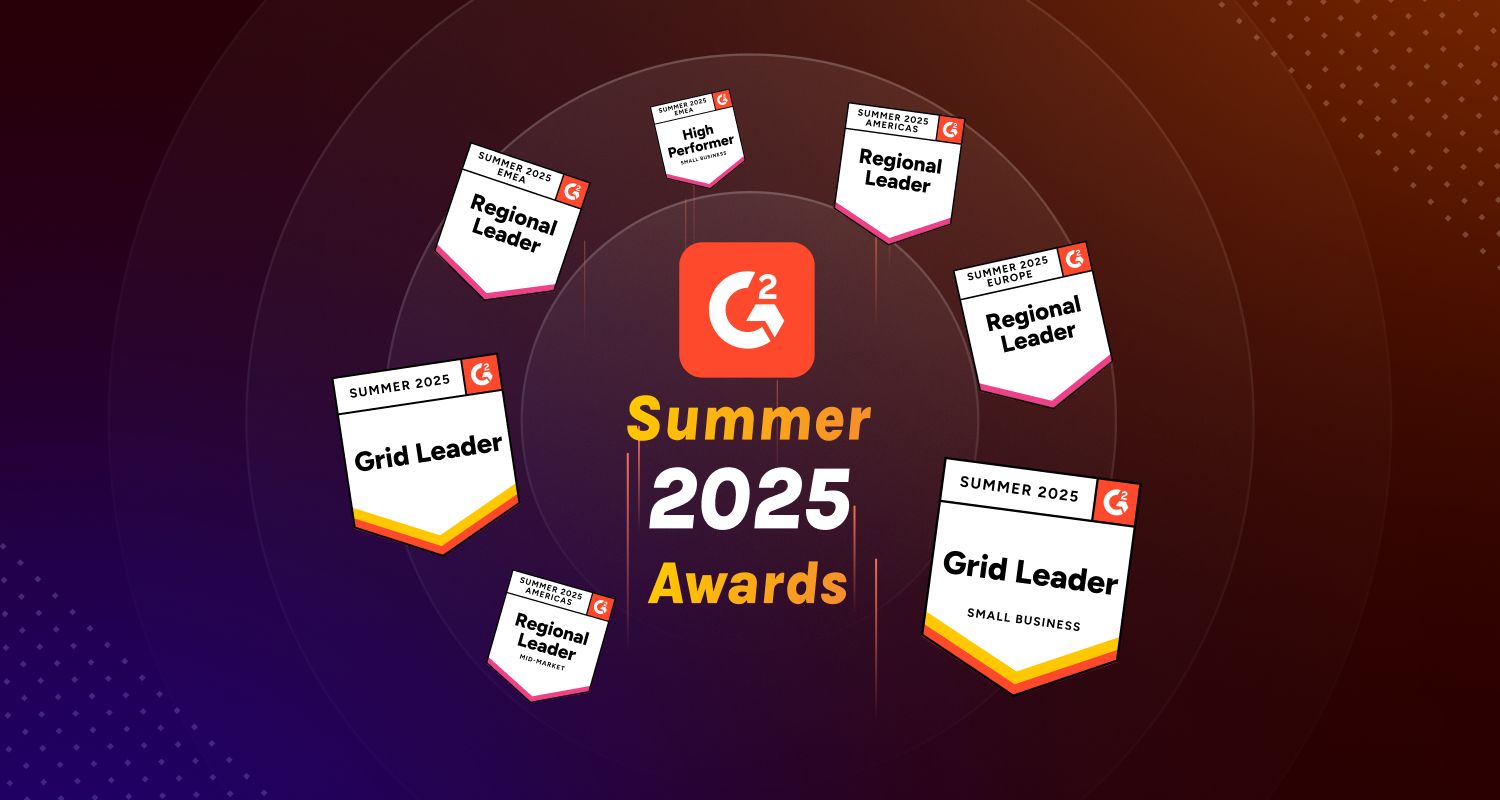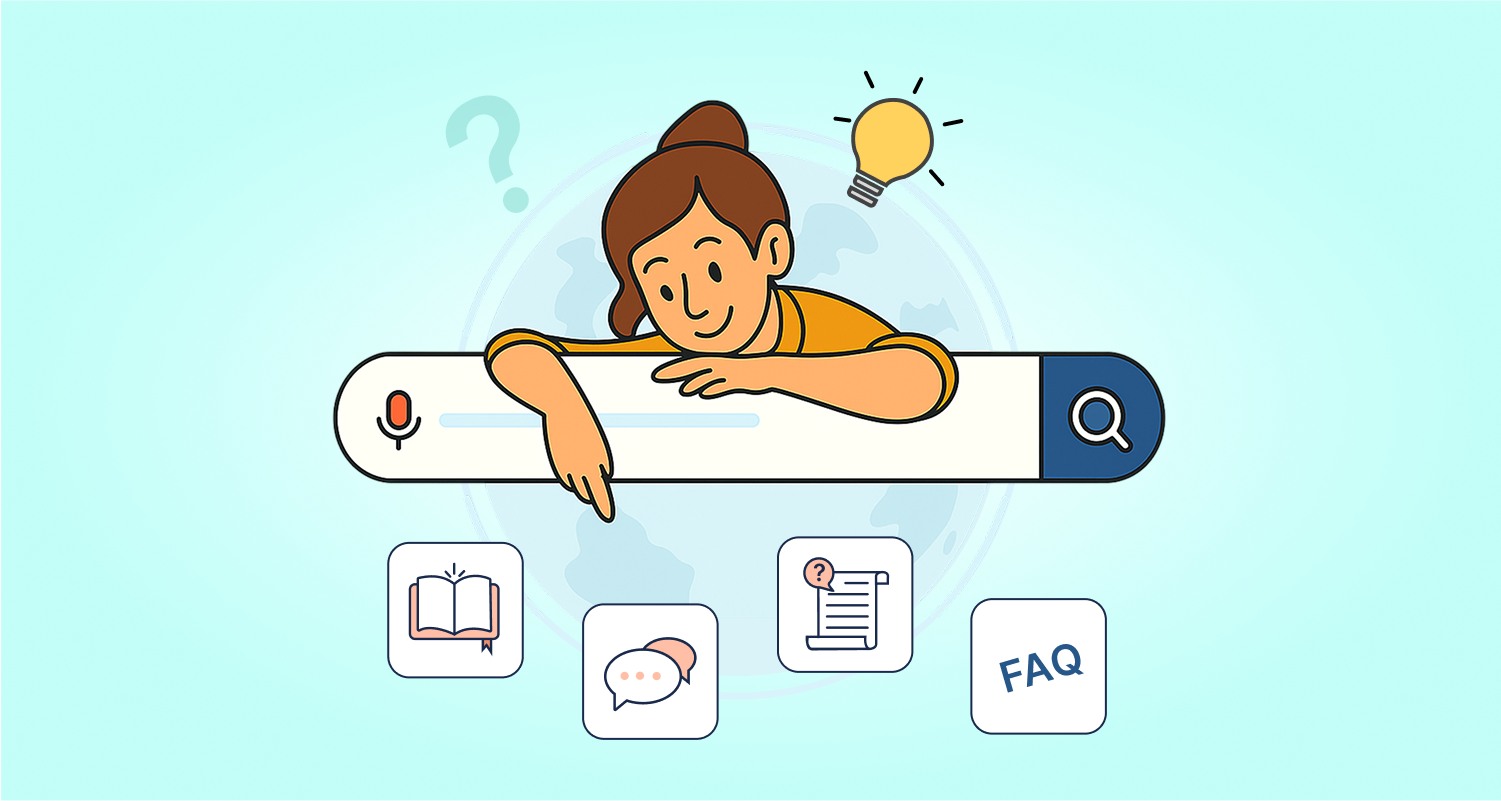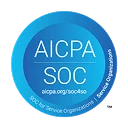Every business has its own unique service standards and quality benchmarks. As a business owner or support manager, effectively monitoring, evaluating, and enhancing service quality is essential for maintaining customer satisfaction and loyalty in today’s competitive landscape.
But how do you measure the effectiveness of your support? The answer lies in implementing a customer service scorecard—a strategic evaluation tool that helps you systematically track progress toward delivering excellent customer service.
This blog will help you understand customer service scorecards in detail and provide actionable steps to create one tailored to your business needs.
What is a customer service scorecard?
A customer service scorecard is an evaluation method that businesses use to track, analyze, and measure the performance of support agents and the overall quality of customer service.
These scorecards include a set of key performance indicators that align with the company’s objectives and service standards.
The insights gained from these scorecards can help you identify improvement areas, develop targeted solutions, and consistently deliver high-quality customer service.
Reasons why businesses use customer support scorecards
Customers’ experience relies on how good the overall support is and how well the agents interact with them across all touchpoints.
The following are the benefits of implementing customer service scorecards:

Establishes clear service standards and measurable goals
Customer service scorecards create a concrete framework for setting performance targets that align with your business objectives.
Whether you’re aiming to improve response times, increase customer satisfaction, or enhance first-contact resolution, scorecards provide the structure to:
- Define specific, measurable performance expectations
- Track progress toward these goals systematically
- Make informed adjustments when targets aren’t being met
- Celebrate achievements when goals are exceeded
Provides a basis for improving the customer experience
According to SQM group statistics, 95% of customers can continue to do business with a company because they are very satisfied with the team’s customer support.
Scorecards provide the insights needed to consistently deliver that satisfaction. By tracking customer experience metrics, you can:
- Quickly identify when customers aren’t fully satisfied
- Pinpoint specific aspects of service that need improvement
- Take proactive measures to enhance satisfaction before customer relationships suffer
- Implement targeted improvements that directly address customer pain points
Drives accountability and performance ownership
Tracking customer service scorecard metrics at the individual and team levels helps support agents understand that their performance directly impacts their evaluations.
This awareness:
- Encourages agents to take ownership of their service quality
- Motivates teams to work harder toward achieving excellence
- Promotes a culture of responsibility and continuous improvement
- Provides objective foundations for performance discussions
Delivers actionable insights into team’s performance
Customer service scorecards provide clear, organized performance data that offer valuable insights into both individual and team effectiveness over time.
You can:
- Identify recurring patterns in service delivery
- Detect trends in customer issues or service delays
- Pinpoint specific strengths and weaknesses in your team
- Discover training opportunities that can elevate service quality
These insights enable you to allocate resources effectively, develop targeted training programs, and optimize support operations.
Creates a competitive advantage
In crowded marketplaces, exceptional customer service can be a key differentiator. Scorecards help businesses systematically enhance their service quality by:
- Proactively identifying improvement opportunities
- Consistently elevating service standards
- Aligning service delivery with customer expectations
- Outperforming competitors who lack structured quality measurement
What should be included in a customer service scorecard?
For customer service scorecards to be successful, there are certain features that should be included. Here are the elements entailed in an effective scorecard.
Clear review goals
Review goals are the specific objectives you aim to evaluate and enhance the quality and effectiveness of customer interactions.
These goals should:
- Align with broader business objectives
- Be specific, measurable, and time-bound
- Connect to outcomes that matter to customers
- Provide direction for performance improvement
For instance, if your team achieves 90% FCR continually, you can adjust to a higher target instead, say 95%.
Well-defined review period
Review period is the specific timeframes during which customer service performance is evaluated. It could be daily, weekly, monthly, quarterly or annually, depending on the organization’s goals.
These structured review periods:
- Create consistency in performance assessment
- Enable trend identification over time
- Provide natural checkpoints for progress evaluation
- Allow for timely interventions when needed
Clear roles of reviewers and reviewees
Reviewers and reviewees are the individuals involved in evaluation processes. Reviewers can be the managers and supervisors, whereas reviewees are the support teams or individual agents being evaluated.
List down all the participants in the rating process in your documentation for clear and transparent analysis.
Transparency in this process:
- Ensures clarity about responsibilities
- Promotes fairness in assessment
- Establishes accountability for both parties
- Creates a foundation for productive feedback discussions
Rating categories
Rating categories are the specific criteria that are used to assess the performance of your team. Select 3-7 key categories that reflect your service priorities and standards.
These might include:
- Communication quality: Clarity, tone, grammar, and professionalism
- Technical accuracy: Correct information and appropriate solutions
- Empathy and personalization: Understanding customer needs and tailoring responses
- Efficiency: Appropriate handling time and process adherence
- Resolution effectiveness: Solving problems completely and preventing recurrence
- Compliance: Following security protocols and regulatory requirements
Relevant performance metrics
These are indicators that are used to analyze goals, determine success in meeting customer needs, and identify areas for improvement in service delivery.
Customer service scorecards usually entail performance metrics that can help you evaluate the efficiency and effectiveness of your support. They include Customer satisfaction, average response time, first contact resolution, customer retention rate, and others.
Strategic category weights
Category weight is the value given to each metric in regard to the desired goal. Assign appropriate weight to each metric based on its importance to your business objectives:
- Give higher weight to metrics directly tied to strategic priorities
- Ensure critical compliance areas receive appropriate emphasis
- Balance operational metrics with customer experience measures
- Adjust weights as business priorities evolve
For example, if reducing customer effort is a key initiative, you might weight the customer effort score higher than average handling time.
Constructive feedback mechanism
Customer service scorecards should include spaces where reviewers can easily provide comments and more explanation on the report.
Well-structured feedback sessions:
- Highlight specific examples of what went well
- Provide clear guidance on improvement areas
- Connect feedback to behaviors and actions
- Create opportunities for two-way discussion
How to build a customer service scorecard
Now that you know what your scorecard should include, here is a step-by-step guide on creating an effective customer service scorecard.

Utilize a customer service scorecard template
Consider using a customer service scorecard template with predefined fields to ensure you do not leave anything behind.
Customize the scorecard based on the goals of your customer support processes.
Additionally, organize the scorecard in an easy to understand and visually appealing layout so you can clearly feature the ratings.
Here’s a sample of a filled-out customer service scorecard template:
| Category | Weight | Target | Rating | Weighted Score | Comments |
| Communication Quality | 15% | 5 | 4 | 0.6 | Clear and polite communication |
| Technical Accuracy | 20% | 5 | 5 | 1.0 | Provided correct and detailed solution |
| Empathy & Personalization | 20% | 5 | 3 | 0.6 | Response was helpful but lacked empathy |
| Efficiency | 15% | 5 | 4 | 0.6 | Quick resolution without delays |
| Resolution Effectiveness | 20% | 5 | 5 | 1.0 | Fully resolved with no repeat contact |
| Adherence to Process/Compliance | 10% | 5 | 4 | 0.4 | Followed all internal procedures |
| TOTAL SCORE | 100% | 4.2/5 | Strong performance with minor improvements |
Define your goals and objectives
Clearly outline your customer service objectives that you aim to achieve within a specified period with the scorecard:
- Identify your primary service goals: Is your focus on improving efficiency, enhancing customer satisfaction, increasing first-contact resolution, or something else?
- Set SMART targets: Make goals Specific, Measurable, Achievable, Relevant, and Time-bound
- Involve frontline agents: Get input from those who interact directly with customers
- Consider industry benchmarks: Research standards in your industry
For example, if your historical average response time is 6 hours and industry leaders respond within 4 hours, you might set a progressive goal of reducing response time to 5 hours in the first quarter and 4 hours by year-end.
Select the right customer service scorecard metrics
Choose metrics that can give a comprehensive overview of the quality of service and operational efficiency and align with your defined objectives and goals.
Be selective, focus on what truly matters for your business and customers rather than tracking everything possible.
The following is a summary of the metrics to be included in the scorecard.
| Metrics | Description | Measurement unit |
| Customer satisfaction score | Measures the level to which customers are satisfied with the services offered. | Rating range of 1 to 5, presented as %. |
| Service level agreement | Indicates the percentage of customer support requests resolved within the specified time frame. | % of customer interactions meeting SLA. |
| First contact resolution | Monitors the percentage of customer issues resolved on the first interaction. | % of calls resolved on the first attempt. |
| Net promoter score | Defines the likelihood of customers recommending your company to others. | Rating can either be on a scale of 0 to 5 or 0 to 10. |
| Average handle time | Calculates the average duration for an agent to manage a customer issue. | Time units, minutes, and seconds. |
| Average response time | Measures the average period of time for the customer support team to respond to a customer issue. | Time units, minutes, and seconds. |
| Customer retention rate | Gauges the ability of customer service efforts to retain existing customers. | % of retained customers monthly, quarterly, or yearly. |
| Escalation rate | Quantifies the percentage of cases escalated to higher levels of support. | % of escalated cases. |
| Customer effort score | Measures the effort that customers use to manage or resolve an issue related to a product or service. | Rating is often on a scale of 1 to 7. |
| Ticket volume | Tracks the total number of customer support tickets during a given period. | Total number of customer service tickets per day or month. |
| Customer churn rate | Tracks customers who stopped engaging in your business. | % of customers lost. |
| Customer lifetime value | Quantifies the value a customer brings throughout the entire engagement. | Revenue in monetary units |
Collect and analyze data systematically
Advanced customer service organizations increasingly use artificial intelligence tools to analyze 100% of interactions rather than limited samples, providing more comprehensive insights.
Implement a process for regular data collection and analysis:
- Sample interactions across channels: Include email, chat, phone, and social media
- Review a representative sample: Ensure you’re capturing the full range of interactions
- Look for patterns: Identify both common strengths and recurring issues
- Track trends over time: Monitor how performance evolves month-to-month
Update your customer service scorecard results to ensure it is relevant to customer service trends and whether it is on track to achieve the set goals.
Implement a feedback mechanism
Gallup conducted research and found that 26% of support agents agree that the feedback they get helps them to do their work in a better way —highlighting the importance of making feedback constructive and actionable.
Create mechanisms to translate scorecard insights into actionable improvements:
- Share results transparently: Make performance data accessible to teams
- Conduct regular coaching sessions: Use scorecard results to guide development
- Recognize excellence: Celebrate agents who consistently score well
- Develop targeted training: Address common issues through focused skill development
- Revisit and refine: Continuously improve your scorecard based on results and feedback
Customer service scorecard example
Here is a sample customer service scorecard showing performance against set targets and highlighting both strengths and improvement opportunities:
| Metric | Target | Actual Performance | Variance |
| Customer satisfaction score (CSAT) | 90% | 92% | +2% |
| Net promoter score (NPS) | 50 | 55 | +5 |
| First contact resolution (FCR) | 85% | 80% | -5% |
| Average handle time (AHT) | 4 minutes | 4.2 minutes | -0.2 minutes |
| Response time | 1 hour | 45 minutes | -15 minutes |
| Customer effort score | 3 or below | 2.8 | +0.2 |
| Customer retention rate | 90 | 92% | +2% |
This balanced view helps prioritize improvement initiatives while acknowledging what’s working well.
Strengths:
- Customer satisfaction, NPS, and retention rates exceed targets, indicating customers are satisfied with the overall service experience and likely to recommend the company to others.
- Response time is significantly better than the target, showing efficiency in initial customer engagement.
- Customer effort score is positive, suggesting customers find it relatively easy to get their issues resolved.
Improvement Areas:
- First contact resolution is 5% below target, indicating a need to enhance agents’ ability to resolve issues without escalation or follow-up.
- Average handle time is slightly longer than targeted, suggesting potential efficiency improvements.
Leverage customer service scorecards for exceptional support
Regularly evaluating your team’s performance and the quality of support you offer is crucial for refining customer service strategies and enhancing overall productivity.
Review and analyze your customer service scorecard data frequently to achieve customer service excellence, improve satisfaction, and build stronger customer relationships.
Gain insights into your support quality with BoldDesk®—a powerful tool featuring built-in dashboards that can help you continuously refine your customer service scorecard.
Contact us for a 30-minute live demo and discover how BoldDesk can enable you to stand out.
Sign up for a 15-day free trial to experience our capabilities.
If you have any additional insights into customer service scorecards, please share them in the comments section.
Related articles
- Top Customer Service Metrics to Measure and Track
- Customer Service Reports: Best Tips & Metrics to Track
- 10 Key Customer Satisfaction Metrics to Measure
FAQs for Customer Service Scorecards
Both customer service scorecards and QA scorecards are methods used to measure performance, but they focus on different aspects.
A customer service scorecard evaluates the effectiveness of support based on agent interactions, while a QA Scorecard focuses more on the company’s adherence to policies and compliance with standards.
Regularly reviewing scorecards enables businesses to identify support trends, recognize high performers, identify agents that are lacking in skills, and provide necessary resources or training for continuous improvement.
Customer service scorecards should be updated regularly, depending on business needs. Scorecards can be reviewed frequently to closely monitor performance and address any concerns.



















 Email Ticketing System
Email Ticketing System Shared Inbox Software
Shared Inbox Software Multi Brand Help Desk
Multi Brand Help Desk Internal Help Desk Software
Internal Help Desk Software Trouble Ticketing Software
Trouble Ticketing Software Mobile Help Desk
Mobile Help Desk 

















